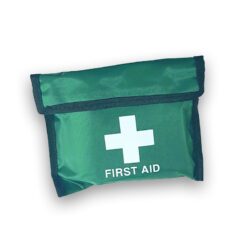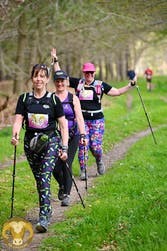By Gill Stewart at
Walking is a rewarding way to exercise that can be done anywhere, urban or rural. Make sure you know how to stay safe in any location. with our simple tips.
 Stay connected – Never go walking without a fully charged mobile phone. You may become unwell, take a wrong turn or encounter somebody else en route who needs assistance.
Stay connected – Never go walking without a fully charged mobile phone. You may become unwell, take a wrong turn or encounter somebody else en route who needs assistance.
Make sure you add your ICE (in case of emergency) info to the contacts list in the phone see this great guide from the stroke association click HERE
Adding the What3words App is always worthwhile because it helps you to tell others where you are, find the start locations of all walks on the WALX portal and direct emergency services anywhere in the world. Find out how to load and use it HERE If you are going into wilder areas
Just a note if you are using route tracking software when out walking – make sure you are only share any live tracking with people you know
You might also want to load an app that can help you to locate the nearest defibrillator in case of an incident see this great guide from the British heart Foundation HERE
Stay blister and injury free
 A small first aid kit is easy to pack and will help you to clean up cuts, grazes and bramble scratches to avoid infection.
A small first aid kit is easy to pack and will help you to clean up cuts, grazes and bramble scratches to avoid infection.
Most have the basic plasters, wipes and bandages in but if you often venture to wilder locations, it might be worth upgrading to a more comprehensive pack. We also advise taking outdoor adventure first aid training too because you will gain knowledge that could save lives including your own in locations where getting help is going to take longer.
Finally, keep feet blister free by preventing them in the first place – pop Pellitec blister pads into shoes where any friction might occur and wear breathable socks to help keep feet dry. Click HERE to view first aid and blister prevention
 Stay hydrated – If you intend to walk for over 20 minutes, it’s a good idea to take water with you or at least know where it is available en route. If you are out in wilder locations, be aware that water is heavy so factor in top up stops regularly or use a water filtration bottle which can purify water. Do not wait until you are thirsty to drink and be aware that dehydration increases the risk of ill health.
Stay hydrated – If you intend to walk for over 20 minutes, it’s a good idea to take water with you or at least know where it is available en route. If you are out in wilder locations, be aware that water is heavy so factor in top up stops regularly or use a water filtration bottle which can purify water. Do not wait until you are thirsty to drink and be aware that dehydration increases the risk of ill health.
We love the Water to Go bottle which is great for everyday use especially when on holiday where water supplies may be less reliable.
Note – filtration will not kill all viruses so if walking wild – you may need to take a stove to boil water.
 Stay at a comfortable temperature
Stay at a comfortable temperature
Make sure you use breathable fabrics that dry quickly – especially close to the skin. These wick away the sweat and avoid you chilling down if you stop or the weather changes.
Pack a cooling towel which can be pre-soaked to cool you down if you overheat.
Foil blankets are ideal if you need to stay warm for any reason. They are lightweight and something every walker should pop in their packs…just in case. Click HERE to buy one from our store
Your skin and eyes are as important as every other organ in the body- don’t expose them to too much direct sunlight. Use sunscreen on any areas that are uncovered, even on duller days.
Pop on some sunglasses to protect your eyes from damage.
These are the WALX bamboo glasses which are cool and comfy click HERE to buy
 Stay within your limits
Stay within your limits
Whilst we are attracted to those rugged locations, it is important to make sure you are prepared for walking on moorlands and mountainous terrain. Put some miles in on the flat if you are a beginner and then begin training on hills. Bear in mind that whilst the paths up our favourite peaks like Snowdon may look easy to navigate, they do require an up hill slog of several hours and if the weather changes you could end up not even seeing the path! Never attempt challenging walks unless you have trained for the conditions, have the right kit and know who to call if you get in trouble. Remember these locations are not suited to Ambulances so you need to call 112 and make sure you know exactly where you are so they can call mountain rescue or the coast guard if on cliff paths.
 The same rule applies if you are taking on a distance challenge hike. Make sure you do training walks to build up the miles, mixing between shorter fast walks to the longer practice walks. Use WALX poles to take the weight of the lower limbs and make you more efficient with every step. See HERE
The same rule applies if you are taking on a distance challenge hike. Make sure you do training walks to build up the miles, mixing between shorter fast walks to the longer practice walks. Use WALX poles to take the weight of the lower limbs and make you more efficient with every step. See HERE
The best way to prepare for any excursion or challenge hike is to join a local group where you can build up safely with expert advice. Many will have planned training sessions and even trips to the most iconic walks or challenges which are much more enjoyable with others.
Find your local group HERE